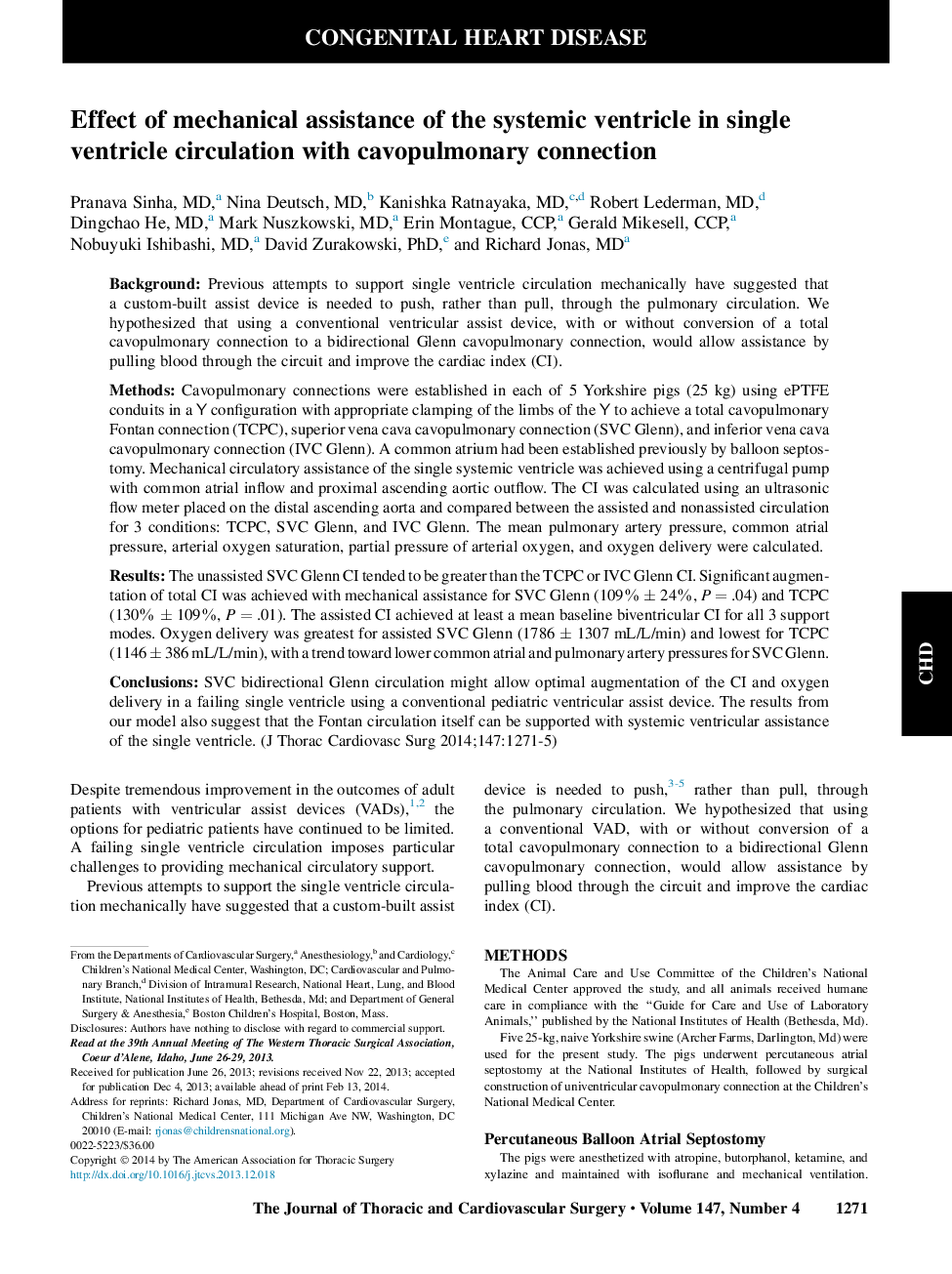| Article ID | Journal | Published Year | Pages | File Type |
|---|---|---|---|---|
| 2979739 | The Journal of Thoracic and Cardiovascular Surgery | 2014 | 5 Pages |
BackgroundPrevious attempts to support single ventricle circulation mechanically have suggested that a custom-built assist device is needed to push, rather than pull, through the pulmonary circulation. We hypothesized that using a conventional ventricular assist device, with or without conversion of a total cavopulmonary connection to a bidirectional Glenn cavopulmonary connection, would allow assistance by pulling blood through the circuit and improve the cardiac index (CI).MethodsCavopulmonary connections were established in each of 5 Yorkshire pigs (25 kg) using ePTFE conduits in a Y configuration with appropriate clamping of the limbs of the Y to achieve a total cavopulmonary Fontan connection (TCPC), superior vena cava cavopulmonary connection (SVC Glenn), and inferior vena cava cavopulmonary connection (IVC Glenn). A common atrium had been established previously by balloon septostomy. Mechanical circulatory assistance of the single systemic ventricle was achieved using a centrifugal pump with common atrial inflow and proximal ascending aortic outflow. The CI was calculated using an ultrasonic flow meter placed on the distal ascending aorta and compared between the assisted and nonassisted circulation for 3 conditions: TCPC, SVC Glenn, and IVC Glenn. The mean pulmonary artery pressure, common atrial pressure, arterial oxygen saturation, partial pressure of arterial oxygen, and oxygen delivery were calculated.ResultsThe unassisted SVC Glenn CI tended to be greater than the TCPC or IVC Glenn CI. Significant augmentation of total CI was achieved with mechanical assistance for SVC Glenn (109% ± 24%, P = .04) and TCPC (130% ± 109%, P = .01). The assisted CI achieved at least a mean baseline biventricular CI for all 3 support modes. Oxygen delivery was greatest for assisted SVC Glenn (1786 ± 1307 mL/L/min) and lowest for TCPC (1146 ± 386 mL/L/min), with a trend toward lower common atrial and pulmonary artery pressures for SVC Glenn.ConclusionsSVC bidirectional Glenn circulation might allow optimal augmentation of the CI and oxygen delivery in a failing single ventricle using a conventional pediatric ventricular assist device. The results from our model also suggest that the Fontan circulation itself can be supported with systemic ventricular assistance of the single ventricle.
